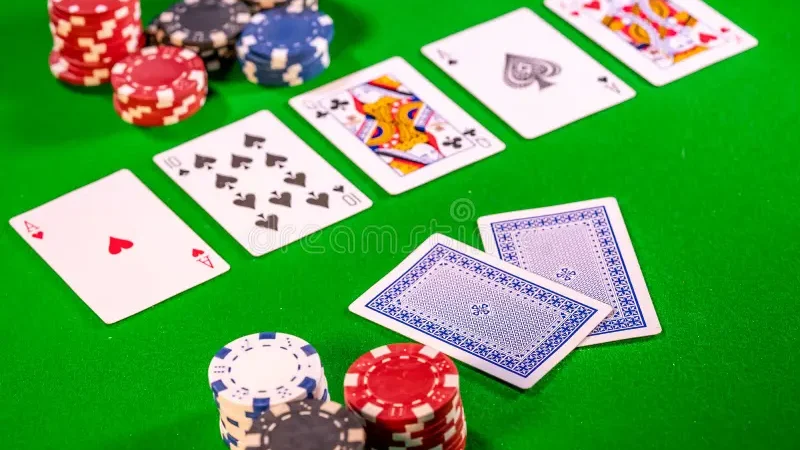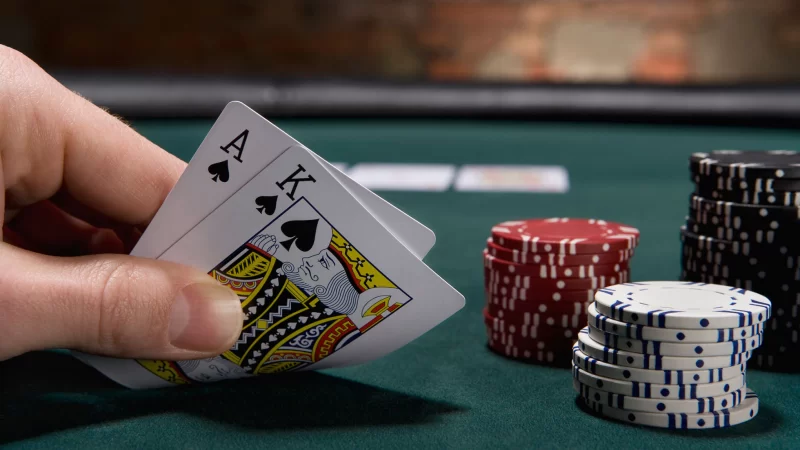The Psychology Behind Poker Bluffing
Poker cannot be won without adopting a strategy that involves bluffing, an innately human deception that relies on a multiple-personality act of psychology, mind-reading and timing.
Understanding bluffs, in turn, depends on an accurate interpretation of body language, pitch of voice and changes in betting patterns.
Non-verbal communication
Machiavelli had some thinking to do. Bluffing is arguably the most important poker skill. If you can convince your opponents that you have a behemoth of a hand, those with a better but concealed hand may fold, and you’ll rake in the chips. Skilful bluffers can make opponents fold thousands of hands that they would otherwise have won. This is why good bluffers don’t actually have a tendency to win; they win only when their bluffs work. Bluffers must be master psychiatric torturors: they must learn to suppress their emotions and pagain ‘rehearse’ themselves before every hand. They must control their bodies, masking movements associated with a bad hand and exaggerating generous shrugs of impatience that incite fears of having read an opponent’s hand. They must develop ‘false ticks’, tapping fingers on a beard that’s really a neck rug, scratching their noses when they secretly feel bullish about their hand, ‘wish-betting’ when they’re desperate to see another player’s hand.
Players should put in place precautions that the telltale tips of their cards are not visible from an opponent’s view, or they should not start staring off into space. Their vocal delivery must also be inaudible to eavesdroppers while it lasts. No telltale pitch shifts of their voice are permitted to communicate anxiety levels.
To further understand the role of nonverbal cues in poker, the study titled ‘Co-action versus inaction: emotional displays as implicit information’ was led by Michael Slepian, a graduate student in the psychological science lab of Nalini Ambady, Professor of Organizational Behavior at Harvard Business School. Slepian filmed the players while recruiting non-expert volunteers to generate the video clips and, in each clip, a full-body shot or only the face/arm views was available to viewers, depending on which angle of the video they viewed; players’ faces judgments were worse than chance, while those based on arms alone accurately reflected quality of hands in contrast.
The art of reading opponent’s reactions
Bluffing is a more subtle and delicate art to master, which consists in finding the right balance between taking risks and yielding rewards. Bluffing can easily sway the outcome of any given hand – and often hinges on unspoken yet highly nuanced nonverbal behaviour and table dynamics; and surely reading your fellow players’ body language (and the rhythm of their bets) aptly is another vital factor; as is sometimes jumping the gun via a perfectly timed and well-directed blindside.
For instance, players can adopt a ‘power’ posture and stare down an opponent to communicate confidence at the table or look up and around when they’re not sure what to do next; players can even use their fingers to tap their chips or twiddle at their fingers to control how their opponents see them and the decisions they make.
Poker-style bluffs have a responsible and sometimes ethical role to play in life, seen in everything from contract negotiation to social intercourse. Otherwise, they can become an exploitative weapon – deceptive and deadly for both sides.
The art of catching your opponents off guard
To bluff is to have a very high risk tolerance – and a deep understanding of your opponent’s behavioural quirks and tics. To do this at a professional level, or in a way that relies on it to win consistently, you have to be able to detect telltale signs of when to bluff – when an opponent looks ‘weak’ maybe, or the board presents a story that you can successfully sell – so you can call that bluff. Professional players often spend hours ‘replaying the hand’ with a group of experts, trying to learn all aspects of what it is they’ve just done.
Body language is also vital to bluffing. For professionals, training centre around controlling one’s own body expressions and postures in order to present an ‘uncertain’ ‘poker face’. Over time, professionals also cultivate the skill to read opponents’ physical tells such as eye movements or the way someone lays out a bet.
These little nuances might be insignificant – but what a difference they could make when trying to fool an opponent. If someone looks stiff and tense when he should look confident; or if a player looks loose and content, then he possibly has a very good hand.
The art of bluffing under pressure
Poker requires bluffing under stress, but you can do it in a thoughtful way if you plan it. You also need to control your emotions — fear will ruin a carefully crafted bluff. Finally, you always want to take into account your opponent’s betting patterns and table image before executing your manoeuvre.
To play professional poker well, you need to instinctively know how to balance risk and reward, with all the shades in between. You need to learn how to size up the probabilities with data, and then also to balance that instinct with your gut. And yes, believe it or not, this is needed not only when you are leaning forward and playing a gritty round at the table, but also to survive in the rest of life, by going through challenging times more successfully. The psychology of bluffing in poker is the same needed in business negotiations or in a love affair. Intuition and bluff can get you so far. But here’s another poker talent: professional players know well how much they need to control physical tells, such as eyes shifting over time, or slight gestures of the hands, smiling, frowning, batching up chips in the pile, so that they get perceived in the right way by the opponent.








